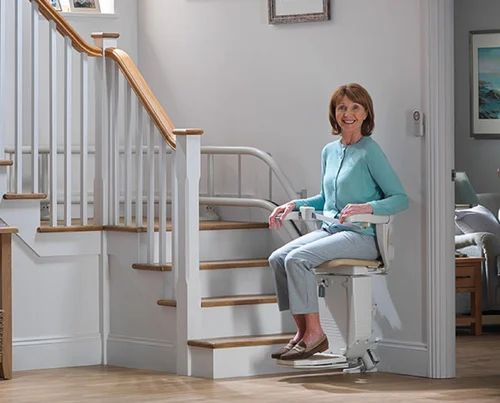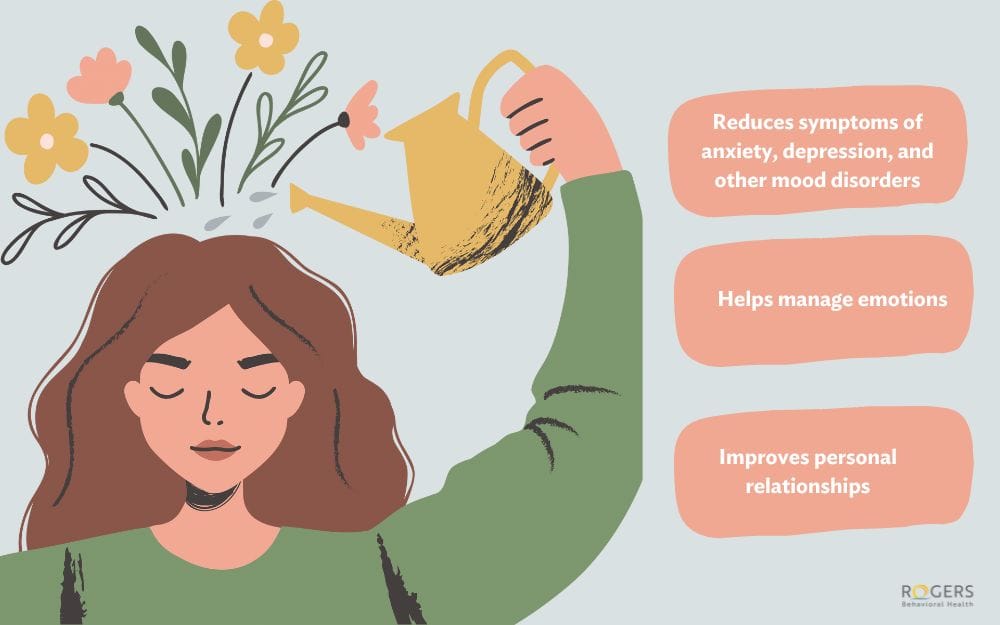health
Oral Appliance Therapy: What It Does, Its Benefits, and Downsides

Introduction
Do you often wake up with a dry mouth, sore jaw, or persistent fatigue even after what seems like a full night of sleep? These symptoms may point toward sleep apnea, a condition where breathing repeatedly stops during rest. Thankfully, treatment options exist, and one of the most popular is oral appliance therapy.
Many people are curious about this alternative because it looks far simpler than machines with masks and tubes. But before you decide, you need a clear view of oral appliance therapy advantages and disadvantages.
In this blog, we will explore how oral appliances work, their benefits, and the possible downsides. We’ll also discover who might benefit most and how to decide whether this option is the right path for better, uninterrupted sleep.
What Is Oral Appliance Therapy?
Oral appliance therapy uses a custom-made device that looks like a sports mouthguard or a retainer. Instead of protecting your teeth, this device shifts the position of your jaw and tongue to help keep your airway open while you sleep.
Unlike CPAP, which pushes air through a mask, this method is mechanical and subtle. The appliance gently pulls the lower jaw forward, preventing airway collapse. When the airway stays open, you breathe steadily through the night and reduce snoring at the same time.
This therapy is most often recommended for mild to moderate obstructive sleep apnea. It can also work well for people who snore loudly but do not have diagnosed apnea. In many cases, dentists trained in sleep medicine design and adjust the device to make sure it fits comfortably.
Moreover, the appliance can be adjusted over time, so you can improve its effectiveness without replacing the entire unit. However, because it changes the position of your jaw, it may take some nights to get used to the feeling.
In short, oral appliance therapy is a simpler, less bulky alternative that appeals to many people who struggle with traditional CPAP machines.
The Key Benefits of Oral Appliance Therapy
One of the biggest reasons people try oral appliance therapy is comfort. While CPAP can be effective, not everyone enjoys wearing a mask with airflow all night.
Here are some main advantages:
- Comfortable and small: The device is lightweight, making it easy to carry during travel.
- No noise: Since there is no machine, both you and your partner enjoy quieter nights.
- Ease of use: Putting in the device takes seconds, unlike adjusting masks or machines.
- Better compliance: Patients often use the device more regularly than CPAP because it feels less intrusive.
In addition, oral appliances do not need electricity, which is a major plus for people who move around or live in areas with frequent power issues. They also require less daily maintenance compared to hoses and masks.
Another important benefit is the positive effect on relationships. Snoring often disrupts a partner’s sleep, which can create tension. By reducing snoring, oral appliance therapy often helps both you and your partner sleep better.
Therefore, if lifestyle and convenience matter to you, oral appliance therapy often offers a simpler way to manage symptoms and enjoy improved rest. However, like any treatment, it has its downsides too, which you need to weigh carefully.
Downsides and Limitations
Although oral appliances are appealing, they are not perfect. You should consider the limitations before deciding.
Some possible downsides include:
- Jaw soreness or stiffness: Since the appliance repositions your jaw, some discomfort may appear in the beginning.
- Dental changes: Over time, teeth may shift slightly if the device is not adjusted properly.
- Limited effectiveness for severe apnea: If your sleep apnea is moderate to severe, CPAP often works better.
- Adjustment period: It can take several nights or even weeks to feel fully comfortable.
On top of these issues, follow-up care is crucial. Without regular check-ins, the device might stop working as effectively, or discomfort could increase.
Moreover, not every dentist is trained in creating these appliances. You need a specialist who understands both dental structure and sleep apnea treatment. Skipping this step may lead to a poorly fitted device that causes more problems than it solves.
Finally, oral appliance therapy is not always covered by insurance to the same extent as CPAP. This means out-of-pocket costs could be higher for some patients.
So, while therapy provides comfort and ease, it is not the ideal choice for everyone. Understanding both sides helps you prepare for what to expect and decide with confidence.
Also Read: Role of Community-Based Research Sites in Advancing Healthcare
Oral Appliance vs CPAP: Which One Should You Consider?
When comparing oral appliance therapy with CPAP, your lifestyle and severity of symptoms play the biggest role.
If your apnea is mild to moderate, and you prefer minimal equipment, oral appliance therapy might be ideal. It is easier to travel with, simpler to use, and less disruptive for partners.
However, if your apnea is more severe, CPAP generally remains the stronger choice because it provides a constant stream of air pressure that keeps the airway open. Patients with dangerously low oxygen levels often need that stronger support.
Think about these questions before choosing:
- Do you travel often and need a portable option?
- Do you struggle with mask discomfort or airflow?
- Are you willing to attend follow-up visits for adjustments?
- Has your doctor classified your apnea as mild, moderate, or severe?
Not only that, but you should also consider your own consistency. The treatment only works if you use it nightly. Many people abandon CPAP because they find it hard to sleep with, while oral appliances often encourage better long-term use.
Therefore, the right treatment is not about which option is “best” overall, but rather which one you can commit to.
Talking With a Specialist Matters
Although researching options gives you valuable insight, a trained professional is the one who should guide your final choice. A sleep specialist or dentist experienced in sleep medicine can review your sleep study, airway anatomy, and medical history to determine what works best.
In some cases, they may recommend a combined approach. For example, you might use CPAP at home but rely on an oral appliance during travel. Other patients may switch from CPAP to an appliance after symptoms improve or as their tolerance changes.
When you meet with a provider, share not only your medical results but also your lifestyle challenges. If traveling with machines seems impossible or you struggle with mask anxiety, be open about it. This helps your specialist recommend an option you are more likely to use consistently.
Moreover, ongoing checkups are essential. Appliances need adjustments, and CPAP requires pressure monitoring. With proper follow-up, you avoid complications and make sure the treatment remains effective.
Therefore, never choose your therapy alone. Partnering with a qualified provider ensures you protect your health while finding a treatment you can live with every night.
Conclusion
Oral appliance therapy has gained attention as a comfortable and practical solution for people with mild to moderate sleep apnea. It is small, quiet, and often easier to stick with than CPAP. At the same time, it has limitations, including jaw discomfort, dental changes, and reduced effectiveness for severe cases.
The choice between CPAP and oral appliance therapy depends on your sleep study results, personal comfort, and lifestyle needs. What matters most is finding a treatment that works for you long term.
At Midwest Sleep REMedies, we specialize in CPAP-free solutions designed for people who want alternatives to traditional machines. Our team works with you to create therapy that fits your daily life. If you are ready to improve your sleep quality and overall health, contact us today and explore oral appliance therapy services to manage sleep apnea.
health
Stair Lift Myths vs Facts: What to Know

Introduction
Mobility challenges can turn simple, everyday tasks into stressful experiences especially when stairs are involved. As we age or face issues like injuries, chronic pain, or temporary medical conditions, climbing stairs becomes more than an inconvenience; it becomes a safety risk. That’s where stair lifts step in as an essential home accessibility solution.
Stair lifts provide a smooth, safe, and reliable way to move between floors without fear of slipping or straining the body. But with rising awareness and demand, many misconceptions have also surfaced. If you’re exploring chair lifts it’s important to look beyond the myths and understand the real facts.
For a deeper look into costs, safety, and ongoing service, you can also check this helpful guide: What You Need to Know About Stair Chair Lift Cost, Safety & Service
Stair Lift Myths vs Facts: What to Know
Myth 1: Stair Lifts Are Only for the Elderly
Fact: While seniors are the most common users, stair lifts support people of all ages and mobility levels. Individuals recovering from knee or hip surgery, those with temporary injuries, or anyone managing conditions like arthritis, balance disorders, vertigo, or chronic pain often rely on stair lifts to move safely between floors. Parents with children who have mobility disabilities also use them to create a safer home environment.
Beyond health-related needs, stair lifts also help people who simply want greater independence and fall prevention at home. Modern designs are user-friendly, quiet, and customizable, making them suitable for multi-generational households not just older adults. Age is not the deciding factor mobility, comfort, and safety are.
Myth 2: Stair Lifts Will Damage Your Walls or Staircase
Fact: Many believe stair lift installation requires drilling into walls, but this is a misconception. Stair lifts are mounted directly onto the stair treads, not the wall, which means your walls remain untouched and unharmed. The rails sit securely on the steps using low-impact brackets that don’t interfere with flooring, drywall, or handrails.
The installation process is also quick and clean, often completed within a few hours with minimal disruption to your home. If you ever remove or upgrade the lift, the staircase typically shows little to no sign that a lift was ever installed. This makes stair lifts ideal for renters, historic homes in Philadelphia, and homeowners who don’t want permanent alterations.
Myth 3: Stair Lifts Are Too Expensive for Most Households
Fact: While stair lifts are a long-term investment, they are far more affordable than people assume. In Philadelphia, many providers offer budget-friendly models, short-term rentals, refurbished lifts, and easy monthly payment plans. This makes stair lifts accessible for households with different financial needs not just those who can pay upfront.
Additionally, certain insurance plans, veterans’ programs, disability services, and local nonprofit organizations may provide financial assistance or partial coverage if the lift is medically necessary. When factoring in the cost of assisted living, in-home caregiver services, or major home renovations, a stair lift is often the more cost-effective and practical solution. For homeowners wondering whether a stair lift is worth it long-term, here’s a useful breakdown:
Myth 4: Stair Lifts Look Bulky and Ruin the Home’s Aesthetic
Fact: Modern stair lifts are a far cry from the large, outdated models people often imagine. Today’s chair lifts are engineered with slim, streamlined profiles that fit neatly along the edge of the staircase without obstructing the walkway. They feature foldable seats, armrests, and footrests, allowing the entire unit to tuck away when not in use so family members can move up and down the stairs freely.
Manufacturers also offer custom finishes, upholstery choices, and rail colors, making it easy to match the lift with your home’s décor—whether you have a traditional Philadelphia rowhome or a contemporary interior. Many homeowners are surprised at how subtle the lift looks once installed, blending in naturally rather than standing out.
Some high-end models even come with low-noise motors, minimal wiring visibility, and compact charging stations, giving the entire system a cleaner, more modern appearance. Instead of ruining the aesthetic, today’s stair lifts often contribute to a safer, more accessible home environment without sacrificing style or space.
Myth 5: Stair Lifts Are Difficult to Operate
Fact: Stair lifts are designed with simplicity in mind, making them easy for people of all ages to use even those who aren’t comfortable with technology. Most units feature one-touch controls, such as a handheld remote or a small joystick mounted on the armrest. The rider only needs to sit down, fasten the safety belt, and gently press the button or switch to move up or down the stairs.
The ride itself is smooth and gradual, thanks to soft-start and soft-stop mechanisms that prevent sudden jolts. This makes the experience comfortable for people with joint pain, limited mobility, or balance concerns. Many models also include automatic swivel seats, which turn safely toward the landing at the top and bottom of the stairs, allowing users to get on and off the chair without twisting their body or risking a fall.
Additionally, stair lifts come with built-in safety sensors that detect obstacles on the stairs, battery backups for power outages, and easy-to-understand indicator lights. These features are designed to build user confidence and independence. Even first-time users typically feel comfortable after just one or two rides, making stair lifts one of the most accessible home mobility solutions available today.
Choosing the Right Stairlift Service in Philadelphia
Selecting a reliable provider is just as important as choosing the right chair lift model. A trustworthy stairlift service in Philadelphia should offer:
- Free home assessments
- Customized recommendations based on staircase type
- Installation by trained technicians
- Maintenance, servicing, and repairs
- Transparent pricing and warranty information
Checking customer reviews and service ratings also helps you make a confident decision.
Benefits of Installing Chair Lifts in Your Home
A stair lift doesn’t just add convenience it restores independence and peace of mind. Here’s why many homeowners choose to install one:
- Enhanced Safety: A stair lift significantly reduces the risk of falls, especially for individuals with balance issues or limited mobility.
- Greater Comfort: Climbing stairs can strain joints and muscles. A chair lift removes that physical burden entirely.
- Improved Accessibility: It allows users to move freely across different floors, maintaining full use of their home.
- Reassurance for Family Members: Loved ones can feel confident knowing you are navigating your home safely every day.
Conclusion: Don’t Let Myths Influence Your Decision
Stair lifts are practical, safe, and life-changing mobility solutions. While misinformation can create confusion, the reality is that today’s chair lifts are versatile, affordable, and designed for everyday comfort. Whether you’re planning a long-term home upgrade or exploring short-term accessibility options, partnering with a reliable stairlift service in Philadelphia ensures you make an informed, beneficial choice.
With accurate information and professional support, you can reclaim independence, improve safety, and enjoy stress-free movement throughout your home—without being misled by myths.
health
College Mental Health and Anger Management Florida | Luna Bloom

Introduction
Human-like text generation is a very difficult and time-consuming process. College life can be a rollercoaster ride of the most fun and hardest times in one’s life. It is no wonder that, among all other students, Florida ones are the most that have difficulties with their emotional and mental states, since they have to go through a lot of pressures at the same time: classes, relationships, jobs, and personal growth. At Luna Bloom Psychiatry, we are very much aware of the unique pressures that young adults are under and hence provide them with help that is compassionate, evidence-based, and focused on college mental health in Florida and beyond.
The Importance of College Mental Health in Florida
Florida is a state where college campuses are continually alive with enormous ambitions, creativity, and learning. But at the same time, very easily, stress, anxiety, depression, and burnout can be the hidden problems in those environments. More students than ever are looking for the help of mental health support, and that is where Luna Bloom Psychiatry is really important for the situation.
We are of the opinion that college mental health Florida in the universities deserves to be prioritized. The warm climate, lively social life, and academic demands can be both invigorating and overwhelming at the same time. The issue of many students combining courses, part-time jobs, internships, and family responsibilities is that they have very little time not only for socializing but also for taking care of themselves. One of our main purposes is to build a friendly and non-judgmental atmosphere in which youngsters can talk about their feelings, pick up the coping methods that are good for them, and slowly bring their lives back into equilibrium.
Common Mental Health Difficulties Among College Students
Florida students very often have to deal with a variety of issues like anxiety, and depression, along with social pressures and problems with their identity. These issues can affect their studies and cause them to be emotionally exhausted. Others may go through being away from home, having relationship problems, or being unsure about their future jobs.
Luna Bloom Psychiatry offers help that is specifically aimed at students who are facing:
- Stressful study periods and anxiety related to performance
- Adjustment disorders and feeling lonely
- Sleep complications and being exhausted
- Changing moods or hard to control emotions
- Lack of drive or difficulty in concentrating
By giving special attention to the early treatment and individual care, our doctors are able to help the students become more resilient and establish good emotional health habits for life.
Tackling Anger Management in Florida
Stress and anxiety are the most common issues, but anger management in Florida is becoming another very important subject—a great deal among college students and young workers. Anger that is not controlled can lead to the breaking of relationships, lowering of academic performance, and decline of self-worth. At Luna Bloom Psychiatry, we have developed special programs for anger management that allow individuals to learn their triggers, control their emotions and react to the conflict in a calm manner.
The proper way to deal with anger management Florida needs the anger to be viewed as the cause of the problem but rather the manner of its expressing that counts. Psychiatrists and therapists working in our clinic teach skills like mindfulness, relaxation training, and cognitive-behavioral therapy (CBT) as methods for controlling anger positively and healthily. By means of these sessions, clients acquire the ability to assert their needs rather than attacking, thus developing stronger and healthier bonds with people around them.
Desire of College Mental Health and Anger
It is quite common that mental health and anger issues to be connected. Anger, for example, can be students’ defense mechanism when they are under constant pressure or in an emotional crisis at their college. That is why Luna Bloom takes integrated treatment—the one addressing both the college mental health in Florida and the anger management in Florida issues at the same time.
Our therapists focus on the creation of self-awareness and the skill of emotional control, making it easy for the students to pick up the feelings behind the anger such as fear, frustration, or sadness. This all-encompassing solution not only cuts down on the number of disputes but also nurtures the emotional maturity of the person for a long time.
The Role of Luna Bloom Psychiatry in Students’ Success
At Luna Bloom Psychiatry, we understand clearly that every student is going to be different. That is why we develop treatment plans that are completely tailored to the individual and their needs with the hope of achieving the best possible results. In addition to the standard psychiatric treatment, we also provide the following supported by modern, evidence-based therapies.
Comprehensive evaluations for the identification of emotional and behavioral patterns:
Cognitive-behavioral therapy (CBT), dialectical-behavioral therapy (DBT), and mindfulness-based therapy as well as Normal therapy as interventional techniques
- Psychotropic medication management as an option
- Telepsychiatry services for handy access throughout Florida
- Workshops and group counseling aimed at stress relief, emotional stability, and social interaction
Our kind-hearted staff members have the necessary training to treat people in the age range of college students and provide a non-judgmental setting for them to talk about their problems openly.
Why Select Luna Bloom Psychiatry?
It is a big thing to choose the right mental health provider. What differentiates Luna Bloom Psychiatry from others is our devotion to a holistic, person-centered approach to treatment. We do not merely treat symptoms; rather, we provide care that is directed at the causes of emotional suffering.
It is our aim to make it possible for young adults to be able to create emotional resilience, to grow up with healthy coping strategies and to feel in control of their lives. No matter if it is anxiety during exams, relationship issues or having difficulty in expressing feelings- Luna Bloom Psychiatry is the place to go for needy tools and guidance to grow.
We are also in great collaboration with universities and colleges throughout Florida, besides providing resources and partnerships to raise the mental health awareness on a campus-wide scale. Through various methods like outreach programs and educational sessions, we inculcate in students that asking for help is a strong rather than weak thing to do.
The First Step of Healing
In case you or someone you know is having problems with stress, emotional instability or anger, please remember that there is help at hand. Luna Bloom Psychiatry provides a safe and nurturing place where healing starts with comprehension. Depending on whether you are dealing with the rigors of college or day to day challenges, our trained experts will grant you the power to achieve tranquility and a clear mind.
Do not let the stress go to the point where it is unbearable. Contact us today to know more about our mental health services for college in Florida and anger management in Florida. Luna Bloom Psychiatry is here to let you blossom—one step at a time.
health
How Growth Scan Shows Baby’s Health and Development
-
Business2 years ago
Cybersecurity Consulting Company SequelNet Provides Critical IT Support Services to Medical Billing Firm, Medical Optimum
-
Business2 years ago
Team Communication Software Transforms Operations at Finance Innovate
-
Business2 years ago
Project Management Tool Transforms Long Island Business
-
Business2 years ago
How Alleviate Poverty Utilized IPPBX’s All-in-One Solution to Transform Lives in New York City
-
health2 years ago
Breast Cancer: The Imperative Role of Mammograms in Screening and Early Detection
-
Sports2 years ago
Unstoppable Collaboration: D.C.’s Citi Open and Silicon Valley Classic Unite to Propel Women’s Tennis to New Heights
-
Art /Entertainment3 years ago
Embracing Renewal: Sizdabedar Celebrations Unite Iranians in New York’s Eisenhower Park
-
Finance3 years ago
The Benefits of Starting a Side Hustle for Financial Freedom






























